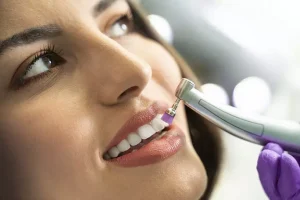
The look of a person’s teeth and gums is an essential source of self-esteem. The surface of a tooth might get dull over time. Teeth enamel can get yellowed or discolored as a result of regular practices such as eating, drinking, and smoking. Patients may consider having their teeth cleaned professionally for aesthetic reasons at some time. Having your teeth polished offers both advantages and disadvantages. Before you decide whether or not polishing is right for you, talk to your dentist.
What is dental polishing and why is it recommended?
Tooth polishing restores the glossy and lustrous luster to the surfaces. Brushing alone cannot remove soft deposits, plaque, biofilms, and stains from the surface of a tooth. However, excessive polishing can have a negative impact on the surface tooth structure, resulting in early wear. Importantly, the thin fluoride layer deposits on the surface of the tooth that help strengthen it are eliminated. As a result, tooth polishing should not be done on a regular basis but rather as needed by the patient.
When it comes to tooth polishing, it usually falls into one of three categories.
- Polishing for therapeutic purposes. The dentist will clean and polish the root surface during therapeutic polishing. Periodontal treatment can be used to eliminate and minimize bacterial accumulation on the root surface.
- Coronal polishing, often known as cosmetic polishing. Cosmetic polishing, as the name indicates, is a treatment for removing stains and plaque from the tooth’s surface. The brightness and brilliance of the tooth surface will be restored with this procedure. To remove a thin layer of the tooth, an abrasive dental agent is utilized.
- Selective polishing. When a tooth is polished selectively. If there is a valid therapeutic cause, your dental healthcare expert will polish your teeth. If noticeable stains are still present after your dentist has conducted a scaling and oral debridement, polishing the discolored region would be justified. Other tooth surfaces will be exempt from polishing and cleaning. Endogenous stains, in other terms, cannot be rubbed away. Most extrinsic stains, on the other hand, may be eliminated by scale and polishing.
When it comes to teeth polishing, there are a few things to keep in mind.
Your dentist will carefully employ the right method throughout the tooth polishing treatment to avoid unwanted abrasion of the enamel. The sort of abrasive substance used by your dentist will be determined by the tooth polishing goal. To remove biofilms and stains, a stronger abrasive substance will be used. To decrease wear, a finer abrasive is used to restore the gloss and shine of a tooth.
Contact California Dental Group at 800-407-0161 if you have any queries regarding dental polishing or teeth whitening.

